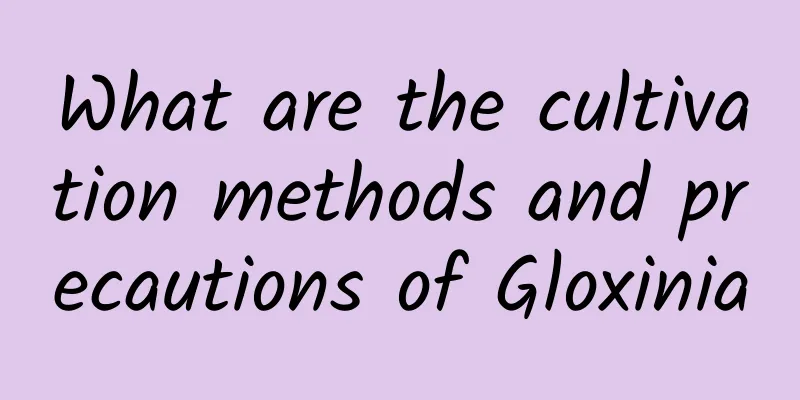What are the cultivation methods and precautions of Gloxinia

Introduction to GloxiniaGloxinia is a plant of the Gesneriaceae family, Gloxinia genus. It comes in pink, red, purple, blue, white, and complex colors. It is large and beautiful. Methods of reproduction include sowing, dividing bulbs, branch cuttings, leaf cuttings, and bud cuttings. Gloxinia cultivation methodGloxinia prefers a warm, humid, semi-shaded environment and avoids direct sunlight. The suitable growth temperature is between 20-25 degrees. The temperature should not be lower than 5 degrees in winter and should not exceed 30 degrees in summer. During its growth period, Gloxinia requires high air humidity, good drainage in the rainy season, and maintaining the substrate dry in winter. It is suitable for growing in slightly acidic sandy soil that is well-drained, rich in humus, loose and fertile. Watering methodThere are hairs on the flowers and leaves of Gloxinia. If they are stained with water droplets, they will easily rot. It is best not to spray water. Use the immersion method to water. Water 1-2 times a day during the high temperatures in summer. Rain must be avoided during flowering, and the soil should be kept slightly dry in winter. Fertilization methodGloxinia prefers fertile, humus-rich, loose, slightly acidic soil, which is often prepared with perlite, river sand, leaf mold and a small amount of decomposed poultry manure. From leaf expansion to flowering, apply thin liquid fertilizer once every 7-10 days. Apply phosphorus fertilizer after flower buds are formed. Do not splash fertilizer on the leaves when applying fertilizer. After each fertilization, you can spray clean water once to ensure the leaves are clean. Pruning methodsGloxinia needs to be pruned by pinching the top of the flower branches. When it blooms, if the leaves around the flowers are dense and hinder the normal growth of the flowers, these leaves can be cut off. After flowering, if you do not need to keep seeds, it is best to cut off the flower stems and remaining flowers. Precautions for cultivating GloxiniaGloxinia is prone to blight nematode disease, rot disease and gray mold disease in an environment of high temperature, high humidity and poor ventilation. After being invaded, the diseased plants should be cleaned up in time, burned in a concentrated manner, and then sprayed with appropriate pesticides for control. |
<<: What are the cultivation methods and precautions of Yunsong?
>>: What are the breeding methods and precautions for spring feathers?
Recommend
Lily's water requirements
1. Watering frequency 1. Spring and Autumn: Lily ...
The meaning and symbol of baby's breath
1. Really like it Gypsophila paniculata is a very...
Kalanchoe loves to drink this kind of "water", drink a cup every 5 days, and the branches in every pot will be full of flowers!
The water that this kind of Kalanchoe loves most ...
The latest technology of freshwater farming of whiteleg shrimp
The whiteleg shrimp grows fast, has tender meat, ...
When does Magnolia bloom?
1. When will it bloom? It usually blooms from Mar...
Can canary roses be planted in the ground?
Can canary roses be planted in the ground? Canary...
What can't be eaten with mango?
1. Garlic Mango is one of the few fruits that con...
What is the function of goldfish spider plant
The ornamental effect of goldfish spider plant Th...
Is yellow wood fragrance cold-resistant? What is the winter temperature for yellow wood fragrance to survive?
1. Is it cold-resistant? Although yellow wood fra...
How to grow succulent spider plants and what to pay attention to
Growth habits of succulent spider plants Succulen...
Her longevity flower blooms for half a year, what is the secret?
1. Management during flowering period Less sun du...
What is the best month to plant sweet potatoes?
When to plant sweet potatoes Sweet potatoes are p...
How often should I water the Hongyun Dangtou?
1. Time Watering does not need to be particularly...
Is red chrysanthemum water grass easy to grow? Breeding techniques and precautions
Is it easy to grow red chrysanthemum water plants...
When is the best time to plant shepherd's purse seeds?
Planting time of shepherd's purse seeds Sheph...









